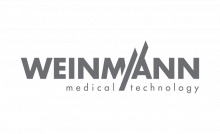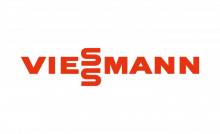Operating instructions and user manuals
Smart product information for your customers
Your users and your own team need clear user manuals, operating instructions, and service documentation to properly use technical systems, equipment, and services. Technical documentation can be delivered in print or in digital form. It must be technically accurate and comply with applicable standards and guidelines.
As your products evolve, so do the demands on your technical documentation. User manuals and instructions for use need to fit the specific variant of a product. As digitalization continues, users expect to be able to access product information and instruction manuals through multiple channels: websites, online help integrated into the operating software, or the machine's control panel. Documentation should also be targeted to different audiences and be as personalized as possible.
As a result, the effort required to maintain and expand technical documentation is constantly increasing.

Operating instructions and user manuals tailored to the tasks and needs of the users
We are a service provider for technical documentation and write user-friendly and state-of-the art operating instructions, user manuals, product information, and service information that leave no questions unanswered. This is how we work.
Your contacts
Operating instructions
Smart operating instructions and user manuals for your products. This is how we work
- Analyze knowledge and tasks. We analyze your users' knowledge and tasks. This provides the basis for aligning the operating instructions and user manuals with the knowledge, needs, and tasks of your target audience.
- Get to know your products and tools. We familiarize ourselves with the products to be documented, your authoring environment, and your style guide.
- Review and implement regulatory requirements. We work with you to assess the impact of regulatory requirements on technical documentation, such as the Machinery Regulation, and implement the requirements accordingly.
- Create content for your user manual or operating instructions. We work with your company's various departments, such as product management, engineering, service, and others to create or update technical documentation content for your user manual or operating instructions. We apply rules laid out in the style guide, for example regarding reuse, standardization, terminology, and writing style (tone of voice).
- Depending on your needs, we can either support your existing documentation team, or we can take over the entire documentation process and create operating instructions or user manuals for you.
- Create documentation in authoring environments. We are familiar with modular documentation and work in various authoring environments and component content management systems (CCMS), depending on your requirements. We use Schema ST4, COSIMA, Smart Media Creator, Empolis CLS, Adobe Experience Manager Guides, IXIASOFT, Microsoft Office, Adobe FrameMaker, Oxygen, and others.
- Manage metadata and variants. We assign the necessary metadata to content for variant management and smart content delivery.
- Technical review. We have your company's subject matter experts review the content created and modified.
- Terminology and writing rules. Depending on your needs, we develop and maintain company-specific terminology and writing rules.
Learn more about operating instructions in our FAQs.
FAQs – Frequently asked questions about operating instructions and user manuals
Why do you need to create operating instructions and user manuals?
Operating instructions and user manuals are important for several reasons:
- Ensure safety. Opering instructions and user manuals provide instructions for safe use, installation, and maintenance of products or machinery. This is important to prevent accidents, injuries, or damage.
- Prevent misuse. Clear instructions ensure that your product is used in accordance with its intended applications and standards. This minimizes misuse that could result in damage.
- Comply with regulatory requirements. In many countries and industries, there are regulations and laws that require operating instructions and user manuals and, in some cases, specify their content. These include product liability laws, product safety laws, and industry-specific regulations and standards such as the Machinery Regulation. Complying with these regulations will help you meet legal requirements and avoid potential legal consequences in the event of damage or improper operation.
- Support and retain customers. Operating instructions and user manuals provide your users with clear instructions on how to use your product correctly. When your documentation prevents or quickly resolves problems, customer satisfaction increases.
- Minimize or eliminate product liability. Operating instructions and user manuals can minimize the manufacturer's liability. By clearly and comprehensively describing the proper use of the product, warning of potential hazards, and clearly documenting the product's functions, you reduce the risk of misuse. At the same time, the likelihood that the company will be held liable for damages is reduced.
- Maintenance. Operating instructions and user manuals provide instructions for the care and maintenance of products. This is important to extend the life of the product and ensure that it functions properly. It also reduces the cost to the manufacturer of servicing and repairing the product.
What are the benefits of using a service provider for technical documentation?
As a technical documentation service provider, we have the expertise and experience to create operating instructions and user manuals efficiently and professionally.
We are familiar with the applicable guidelines, standards, and industry-specific requirements and use proven quality assurance processes.
Writing operating instructions or user manuals in-house requires resources and trained personnel. When you hire a technical documentation service provider, you free up your internal resources. This can be a great advantage, especially when demand fluctuates and time is of the essence, such as when launching new products. A technical documentation service provider ensures that its staff is continuously qualified and trained, so that you have quick access to qualified personnel when you need them at short notice.
And: As a service provider, we always work objectively and design the documentation from the user's point of view.
Why is it important to analyze the target groups for operating instructions or a user manual?
There are several reasons why it is important to analyze the target audience:
- Clarity and usability. By taking a closer look at the target audience, we ensure that operating instructions and user manuals are written in a language and style that users can understand. This minimizes misunderstandings and increases usability.
- Safety. Users have varying levels of experience and knowledge when using products or machinery. It is therefore important to emphasize safety-related information. An analysis of the target groups can help identify the safety information that is needed by that audience and phrase it in a way that is appropriate. This makes it easier for the target group to understand and follow the safety measures.
- Effective training. Operating instructions and user manuals are often used as the basis for training materials. Therefore, it is important to tailor the documentation to the learning needs and preferences of your users. Knowing your target audience will help you tailor your operating instructions and user manuals accordingly.
- Satisfied customers. Well-targeted operating instructions or user manuals enable users to use a product effectively and safely. This increases customer satisfaction and improves your company's reputation.
- Fewer operating errors. Understanding the knowledge and skills of the target audience can help anticipate potential misuse of the product. The intended use of the product and foreseeable operating errors must be described in the operating instructions and user manual to minimize the risk of damage and accidents.
- Efficient communication. Precise audience analysis helps eliminate unnecessary information from the operating instructions and focus on the essentials. This makes documentation more efficient and avoids information overload. Less text also reduces translation costs.
How does parson ensure timely delivery of the operating instructions and user manuals?
Project management is critical. We use both classic and agile project management methods, breaking the project into work packages, prioritizing them and monitoring their progress.
We also work with your experts to plan deadlines for technical input and delivery, milestones, and resources, adjusting them as needed throughout the project. We continuously monitor the planned budget for the project. We believe in open communication with our customers. This allows us to quickly address and resolve any issues or delays that may arise.
How much does it cost to outsource operating instructions and user manuals?
The cost of using a service provider such as parson to write operating instructions or user manuals depends on different factors, including:
- Scope. The larger your operating instructions or user manual, the more time and money it will cost.
- Complexity. The more complex your project, the more expensive and time-consuming the implementation will be.
- Industry. Each industry has specific requirements, such as medical or mechanical engineering. For each industry, certain knowledge is required, which can affect the cost.
- Project duration and time of delivery. If you are looking for a quick delivery or have specific time requirements for your project, costs may increase.








